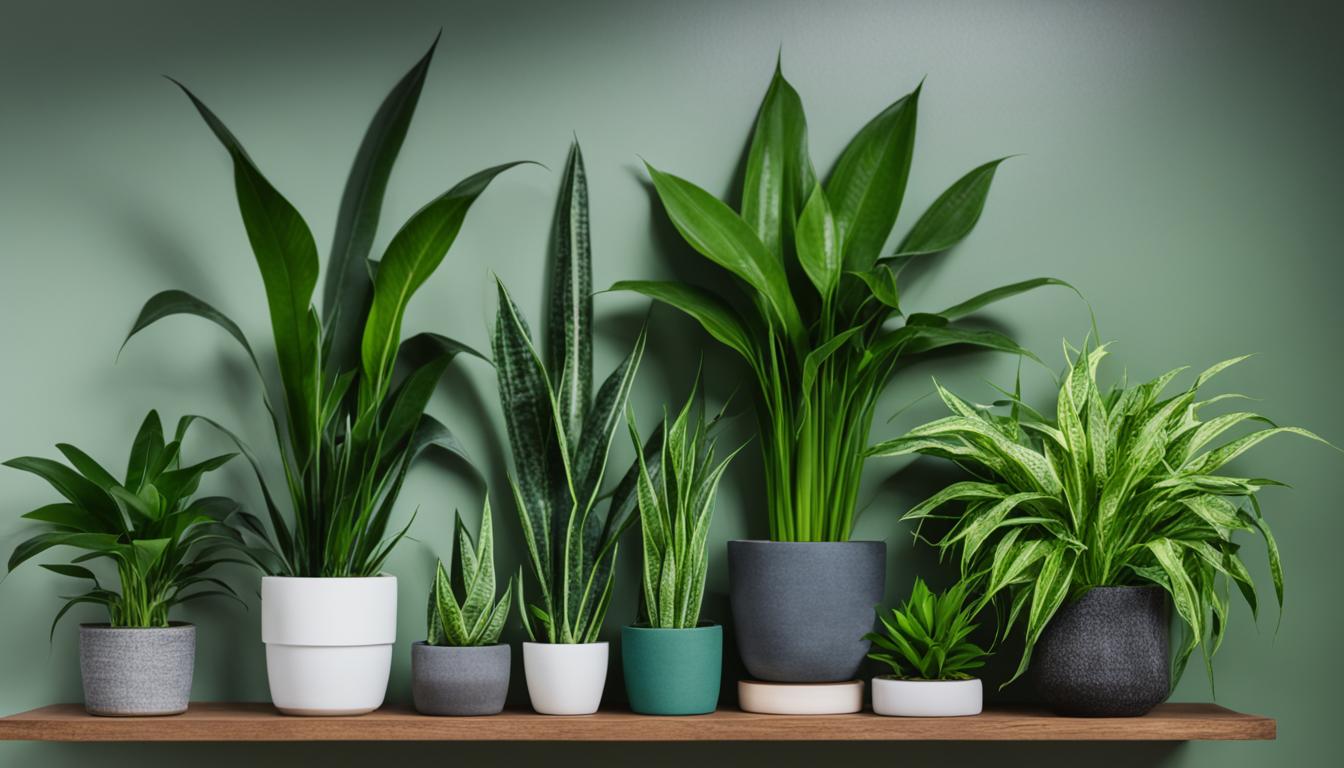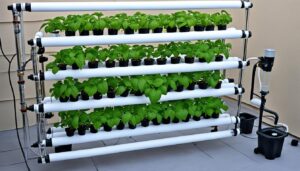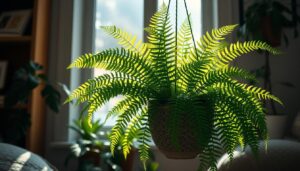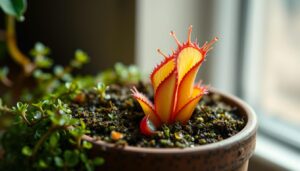Are you having trouble keeping your indoor plants healthy, wondering if they get enough sunlight? Decorating with low light indoor plants care or shade tolerant houseplants can make even the dimly lit room greenery look alive. But, do you know how to take care of them? From low maintenance indoor gardening to easy care potted plants, learning how to grow plants in dark corner plant life and low sunlight houseplant varieties is crucial for a lush, vibrant indoor space.
Are you ready to learn the secrets of dim space plant parenting and turning your shadowy rooms foliage decor into a thriving, easy-to-maintain space? Explore our detailed guide on how to handle dim zones nature indoors. Find the perfect plants for every lighting condition in your home.
Understanding Light Requirements
For indoor plants, knowing about light needs is key for their health and growth. Plants need two main types of sunlight: direct sunlight and indirect sunlight. Direct sunlight is when the sun’s rays hit the plant straight. Indirect sunlight is when the light is filtered or bounced off something before reaching the plant.
Direct vs. Indirect Sunlight
Direct sunlight is usually found near windows, where the sun’s rays can shine right on the plant. This kind of light is perfect for high light plants that love bright, sunny spots. On the flip side, indirect sunlight is when sunlight is blocked or filtered by things like curtains or furniture before it gets to the plant. This is ideal for medium light plants that like a bit less light.
High, Medium, and Low Light Levels
- High light plants need at least 6 hours of direct or indirect sunlight daily. These include plants like succulents and cacti, which do well in south or west-facing windows.
- Medium light plants like indirect or filtered light and do well in east-facing or partly shaded spots at home.
- Low light plants can make do in dim rooms with little natural light. They get enough indoor plant lighting in north-facing windows or places with little direct sunlight.
Knowing what light your plants need is crucial for a successful indoor garden. By picking the right plants for the right light, you make sure your houseplant light needs are covered. This way, your plants will thrive.
Best Plants for Different Light Conditions
Choosing the right indoor plants is crucial for their health and growth. Whether your home gets lots of sunlight or hardly any, there are many beautiful plants that are easy to care for. These plants can brighten up any space.
Low Light Indoor Plants Care
For areas with little sunlight, consider best low light houseplants like the Chinese Evergreen, Snake Plant, and Peace Lily. These plants are tough and can live in partial shade. They won’t die off even in dark rooms.
Medium Light Plants
Medium light indoor plants such as Pothos, Philodendron, and Fiddle-Leaf Fig do well in spaces with some sunlight. They can adjust to different light levels. This makes them great for both bright and dim rooms.
High Light Plants
If your home gets a lot of sunlight, especially in sunny windows, high light houseplants like Cacti, Succulents, Citrus plants, and Geraniums will do great. These sun loving potted plants need at least 6 hours of sunlight each day to grow well.
Knowing which plants can handle different light levels helps you create a beautiful indoor garden. You can have a lush, healthy garden even in low-light areas.
Choosing the Perfect Spot
When it comes to indoor plants, where you put your pots and planters matters a lot. Each window direction has its own lighting, and knowing which plants go where is crucial for their health. Let’s look at the best indoor plants for different window spots.
North Facing Window Plants
North-facing windows get the least sunlight, perfect for plants that love low light. Snake Plants and Chinese Evergreens do great here, adjusting well to the dimness.
South Facing Window Plants
On the other side, south-facing windows get lots of direct sunlight. They’re ideal for plants like Cacti and Citrus that love the sun. These plants will enjoy the light and grow well, giving you beautiful flowers and lots of growth.
| Window Direction | Light Levels | Best Indoor Plants |
|---|---|---|
| North Facing | Low Light | Snake Plants, Chinese Evergreens |
| South Facing | High Light | Cacti, Citrus |
| East Facing | Medium Light | Pothos, Philodendrons |
| West Facing | Medium to High Light | Braided Money Trees |
By knowing what your indoor plants need and placing them in the right spots, you can make a beautiful indoor garden. Try different windowsills to find the best places for your plants, from low-light to high-light ones.
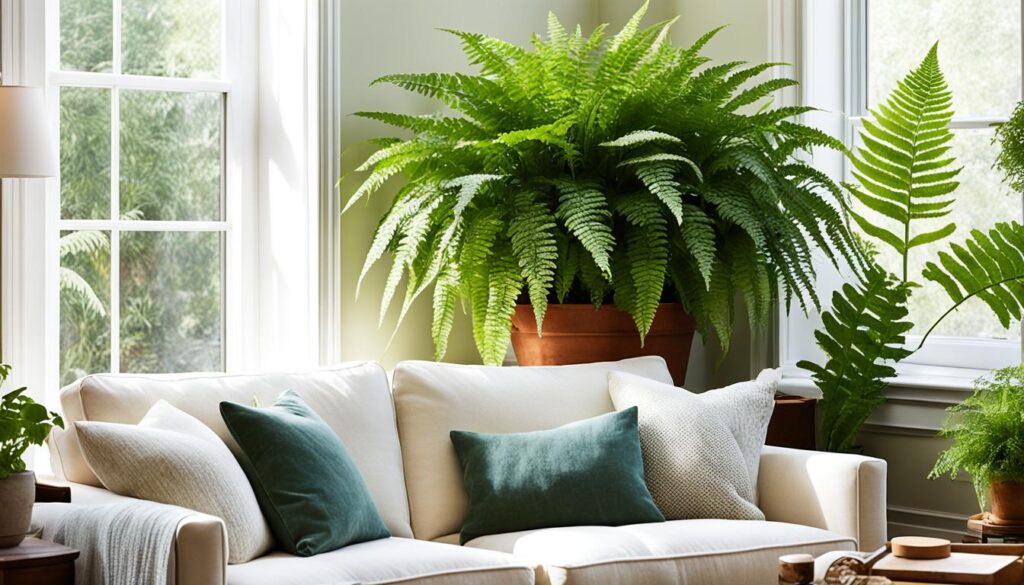
Using Artificial Lighting
When your indoor plants don’t get enough sunlight, artificial plant lighting can change everything. Indoor grow lights like LEDs and fluorescents give plants the red and blue light they need. This lets you grow more plants in low light houseplant areas.
For the best results, place lights 4 to 24 inches from your plants. Adjust the distance based on the bulb’s strength. With the right artificial plant lighting, your plants will get the light they need, even in dim spaces.
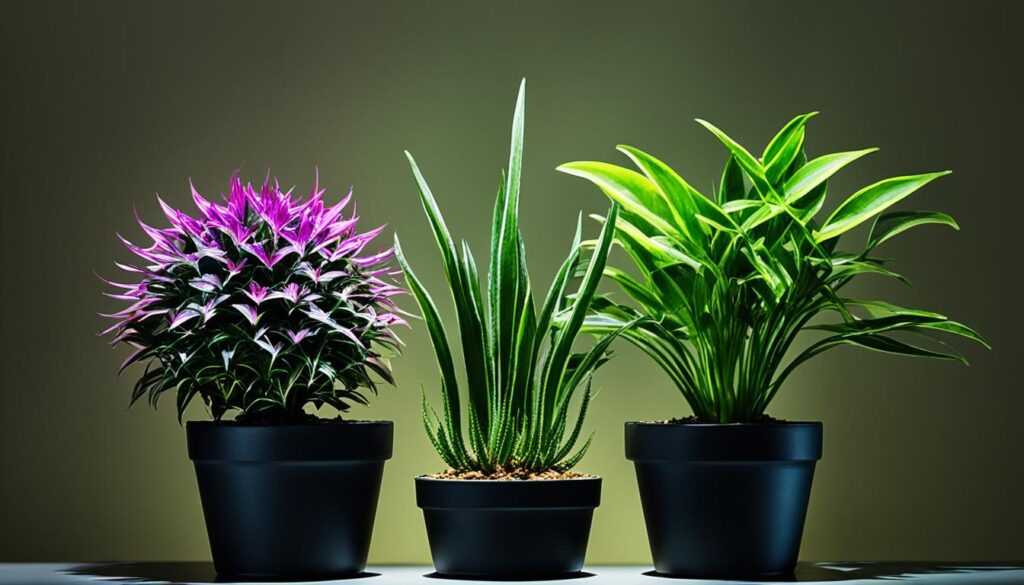
Looking to help your low-light plants grow or start an indoor garden? Supplemental plant lighting is key. Using indoor grow lights opens up new possibilities for your green space.
Signs of Improper Lighting
Getting the right amount of light is key for your indoor plants’ health and growth. Too little or too much light can cause problems. By watching for signs, you can fix these issues and keep your plants healthy.
Too Little Light
Plants with not enough signs of low light plants grow long, thin stems and have few leaves. Their leaves may turn pale green, yellow, or white, showing they’re not making enough chlorophyll. Flowering plants might not bloom because they need enough light to flower.
Too Much Light
Too much signs of too much light can make plants get sunburned leaves. These leaves look scorched or bleached, showing they’re getting too much direct light. This can cause stunted growth and stress in the plant.
Watch your plants closely and adjust their light to fix these problems. Knowing the signs of leggy plant growth and other signs helps you give your plants the right light for them to thrive.
Conclusion
Learning how to care for indoor plants starts with knowing what they need in terms of light. Whether you have plants that love the sun or those that prefer the shade, getting their lighting right is key. By understanding the different light levels, you can create a garden that flourishes in your home.
With this knowledge, picking the right plants for every spot in your home becomes easy. You can find plants that do well in bright spots or those that prefer the shadows. By matching plants with the right light, you can make your home look beautiful and green.
Whether you’re an expert or just starting with indoor plants, knowing what they need in terms of light is crucial. With the right approach, you can grow a healthy, lively garden indoors. This brings joy and a bit of nature into your life every day.
FAQ
What is the difference between direct and indirect sunlight?
Direct sunlight hits the plant straight, like from a windowsill. Indirect sunlight is when something, like curtains or furniture, filters the sun before it reaches the plant.
What are the different light levels for indoor plants?
High-light plants need 6+ hours of direct or indirect sun daily. Medium-light plants do well with filtered light. Low-light plants can survive in dim rooms with little sun.
What are some examples of low-light, medium-light, and high-light plants?
Low-light plants for dim spots include Chinese Evergreen, Snake Plant, and Peace Lily. For medium-light, try Pothos, Philodendron, and Fiddle-Leaf Fig. High-light plants need 6+ hours of sun and include Cacti, Succulents, Citrus, and Geraniums.
How do different window directions affect plant light needs?
North windows get the least light, perfect for low-light plants like Snake Plants and Chinese Evergreens. South windows have the most sun, great for high-light plants like Cacti and Citrus. East windows offer morning sun, ideal for medium-light plants like Pothos and Philodendrons. West windows have intense afternoon light, suited for medium to high-light plants like Braided Money Trees.
How can I use artificial lighting to supplement natural light?
Use LED and fluorescent lights for their efficiency and the right wavelengths for plants. Place them 4-24 inches from plants, based on the type and intensity. Artificial lights help grow a variety of plants in low-light areas.
What are the signs of improper lighting for plants?
Too little light makes plants “leggy” with long stems and sparse leaves. Leaves may turn pale, yellow, or white. Flowering plants might not bloom. Too much direct light can burn leaves, making them look bleached.


